Papers by William Sterner
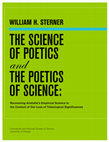
This project reports on the specialized exegesis of the conceptual and methodological foundations... more This project reports on the specialized exegesis of the conceptual and methodological foundations of Aristotle’s Poetics as a productive science of both ancient and modern telic significance. The metapragmatic productivity of the Poetics that aids poets arises out of Aristotle’s use of what I have named ‘Arithmoi of Phenomena’ as methods to determine essential understandings of our experience. The central focus in this report is on Aristotle’s method of causal “species” or genre differentiation in poetic science as grounded in the different poetic capacities for imitating – in media, of objects, by manners, and all together with purposiveness.
Intrinsic to Aristotle’s methods of species differentiation and the definition of Tragedy is the fact that they explicitly include the teleological functions of the catharsis of pity and fear. His overt use of teleological reasoning about artistic imitation as a source of learning and delight that is common to all humans is what makes his Poetics useful to poets and aesthetically enlightening to audiences. This background of productive teleology allows a reconstruction of Ernst Mayr’s “teleological consummatory acts,” despite Mayr’s later abandonment of the concept in favor of a reduction of life-form activities to computed behaviors (Mayr 1974, 2004). Aristotle’s understanding of the Attic Greek political society and ethical character, as well as universally shared human poetic capacities, enabled him to find the functions of human excellence within the healing and completing purposes of catharsis in the city.
The larger project has the underlying purpose of approaching our contemporary problems of and with teleology and the relations of those problems to various modes of numeracy involved in the daily activities of human beings. Those diversely varied “everyday” activities from citizen to scientist are constitutive of a recurring plurality of ‘common sense habitats’ that vary across culturally situated times and locations but share similar covarying numeric skill sets that can be abstractly stated in relation to each other. The wider project attempts this clarificatory goal through a foray into a sequence of combinatoric models with different underlying numeracies that builds an heuristic bridge to modern formal systems, starting with Aristotle’s differentiation of a small number of poetic “species” and ending with countably infinite symbol systems.
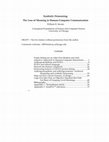
Frame Setting for an After-Postmodern and Antireductive Approach to Human-Computer Interactions "... more Frame Setting for an After-Postmodern and Antireductive Approach to Human-Computer Interactions "I got my first glimpse of artificial intelligence on Feb. 10, 1996, at 4:45 p. m. EST, when in the first game of my match with Deep Blue, the computer nudged a pawn forward to a square where it could easily be captured. It was a wonderfully and extremely human move. … Later I discovered the truth. Deep Blue's computational powers were so great that it did in fact calculate every possible move all the way to the actual recovery of the pawn six moves later. The computer didn't view the pawn sacrifice as a sacrifice at all. So the question is, if the computer makes the same move that I would make for completely different reasons, has it made an "intelligent" move?" Gary Kasparov 1 In the first game of his match with a computer, Gary Kasparov experiences a dramatic shift in his characterization of Deep Blue's mode of play from apprehending a 3 This term is taken from Eugene T. Gendlin's work; see Gendlin, Focusing-Oriented Psychotherapy

Mathematical and Computer Modelling, 1994
Biota is an object-oriented software application for modeling, simulating, and learning about mul... more Biota is an object-oriented software application for modeling, simulating, and learning about multispecies population dynamics. Biota uses a variety of mathematical models including versions of the Lotka-Volterra models and the Nicholson-Bailey model, but goes far beyond the capacity of any one model. We begin by describing the class and object hierarchies of Biota and its general functionality. Species, regions, and relations among species are all modeled as objects. This object-oriented decomposition provides Biota with the capacity to model and simulate complex natural interactions among biological populations. Moreover, Biota allows a mixing of models and the representation of causal interactions not found in standard population models. The mixing of models, however, creates problems for estimating the parameters used in complex simulations, detecting and correcting errors, and in understanding the system being simulated. These difficulties are addressed using a novel approach to creating simulations, which we call the behavior partitioning approach. We also discuss classroom experience with Biota, techniques for managing complexity, and its application to resource management.
Graduate Faculty Philosophy Journal, 1972
Citeseer
Frame Setting for an After-Post-Modern and Anti-reductive Approach to Human-Computer Interactions... more Frame Setting for an After-Post-Modern and Anti-reductive Approach to Human-Computer Interactions....... 1 Anthropomorphism and ELIZA.................................................8 ELIZA and natural language .....................................................16 Descent into human complexity ............................ ...
History of European Ideas, 1988

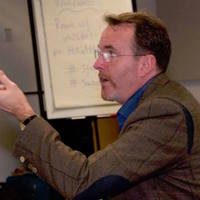
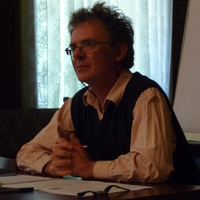

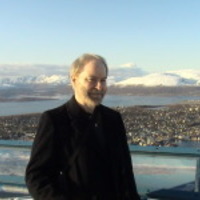
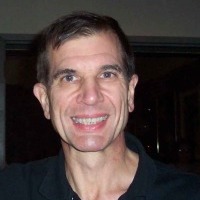





Uploads
Papers by William Sterner
Intrinsic to Aristotle’s methods of species differentiation and the definition of Tragedy is the fact that they explicitly include the teleological functions of the catharsis of pity and fear. His overt use of teleological reasoning about artistic imitation as a source of learning and delight that is common to all humans is what makes his Poetics useful to poets and aesthetically enlightening to audiences. This background of productive teleology allows a reconstruction of Ernst Mayr’s “teleological consummatory acts,” despite Mayr’s later abandonment of the concept in favor of a reduction of life-form activities to computed behaviors (Mayr 1974, 2004). Aristotle’s understanding of the Attic Greek political society and ethical character, as well as universally shared human poetic capacities, enabled him to find the functions of human excellence within the healing and completing purposes of catharsis in the city.
The larger project has the underlying purpose of approaching our contemporary problems of and with teleology and the relations of those problems to various modes of numeracy involved in the daily activities of human beings. Those diversely varied “everyday” activities from citizen to scientist are constitutive of a recurring plurality of ‘common sense habitats’ that vary across culturally situated times and locations but share similar covarying numeric skill sets that can be abstractly stated in relation to each other. The wider project attempts this clarificatory goal through a foray into a sequence of combinatoric models with different underlying numeracies that builds an heuristic bridge to modern formal systems, starting with Aristotle’s differentiation of a small number of poetic “species” and ending with countably infinite symbol systems.
Intrinsic to Aristotle’s methods of species differentiation and the definition of Tragedy is the fact that they explicitly include the teleological functions of the catharsis of pity and fear. His overt use of teleological reasoning about artistic imitation as a source of learning and delight that is common to all humans is what makes his Poetics useful to poets and aesthetically enlightening to audiences. This background of productive teleology allows a reconstruction of Ernst Mayr’s “teleological consummatory acts,” despite Mayr’s later abandonment of the concept in favor of a reduction of life-form activities to computed behaviors (Mayr 1974, 2004). Aristotle’s understanding of the Attic Greek political society and ethical character, as well as universally shared human poetic capacities, enabled him to find the functions of human excellence within the healing and completing purposes of catharsis in the city.
The larger project has the underlying purpose of approaching our contemporary problems of and with teleology and the relations of those problems to various modes of numeracy involved in the daily activities of human beings. Those diversely varied “everyday” activities from citizen to scientist are constitutive of a recurring plurality of ‘common sense habitats’ that vary across culturally situated times and locations but share similar covarying numeric skill sets that can be abstractly stated in relation to each other. The wider project attempts this clarificatory goal through a foray into a sequence of combinatoric models with different underlying numeracies that builds an heuristic bridge to modern formal systems, starting with Aristotle’s differentiation of a small number of poetic “species” and ending with countably infinite symbol systems.